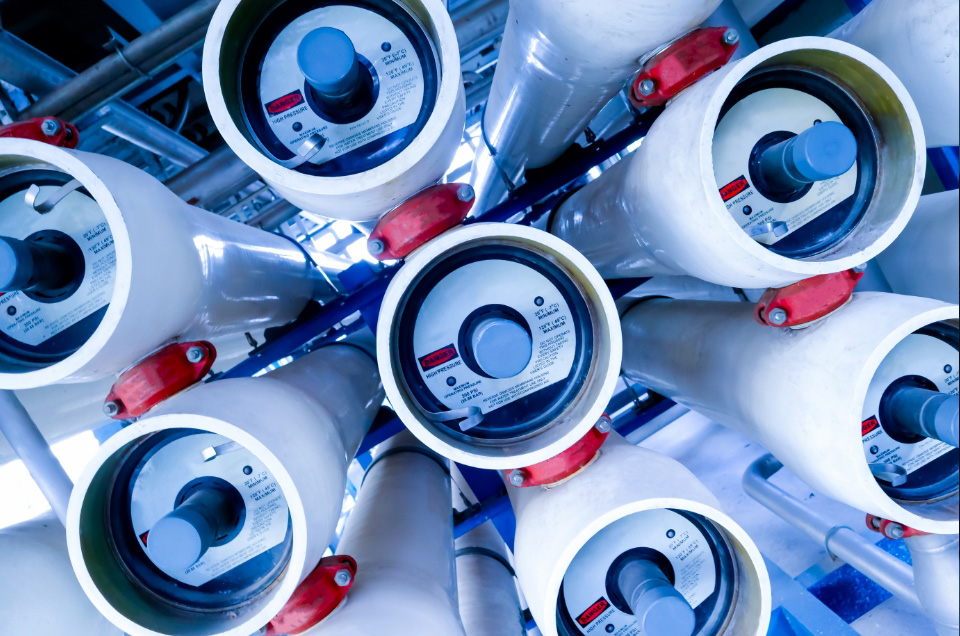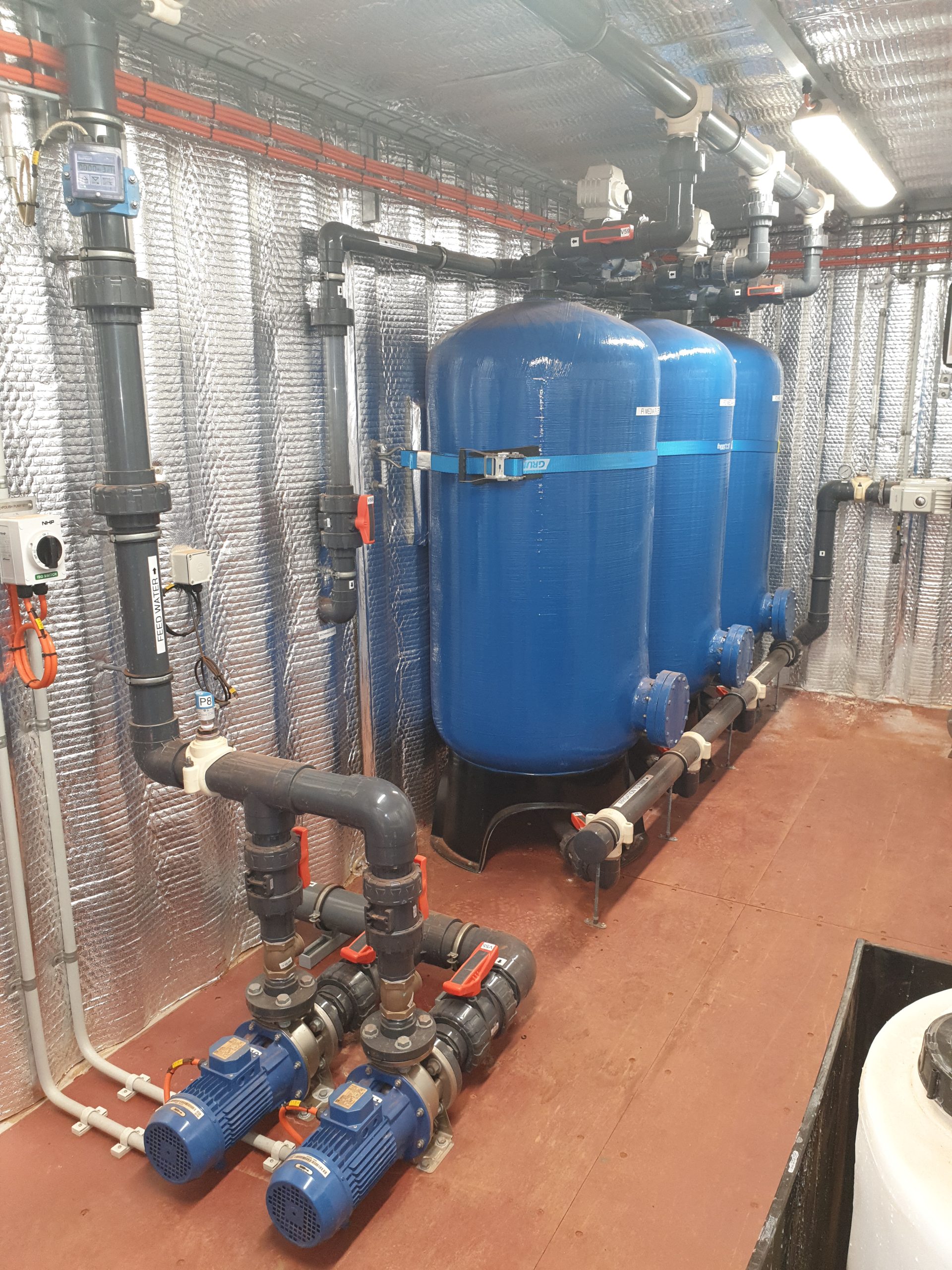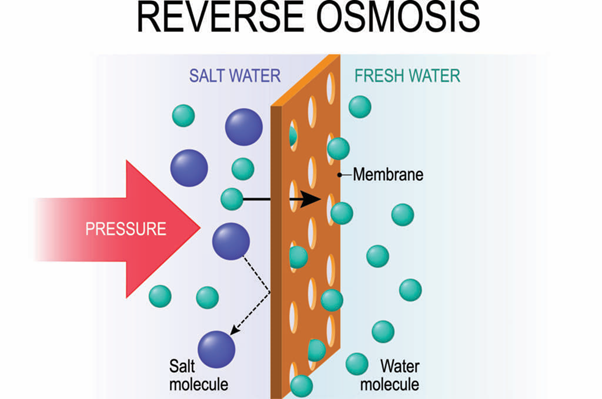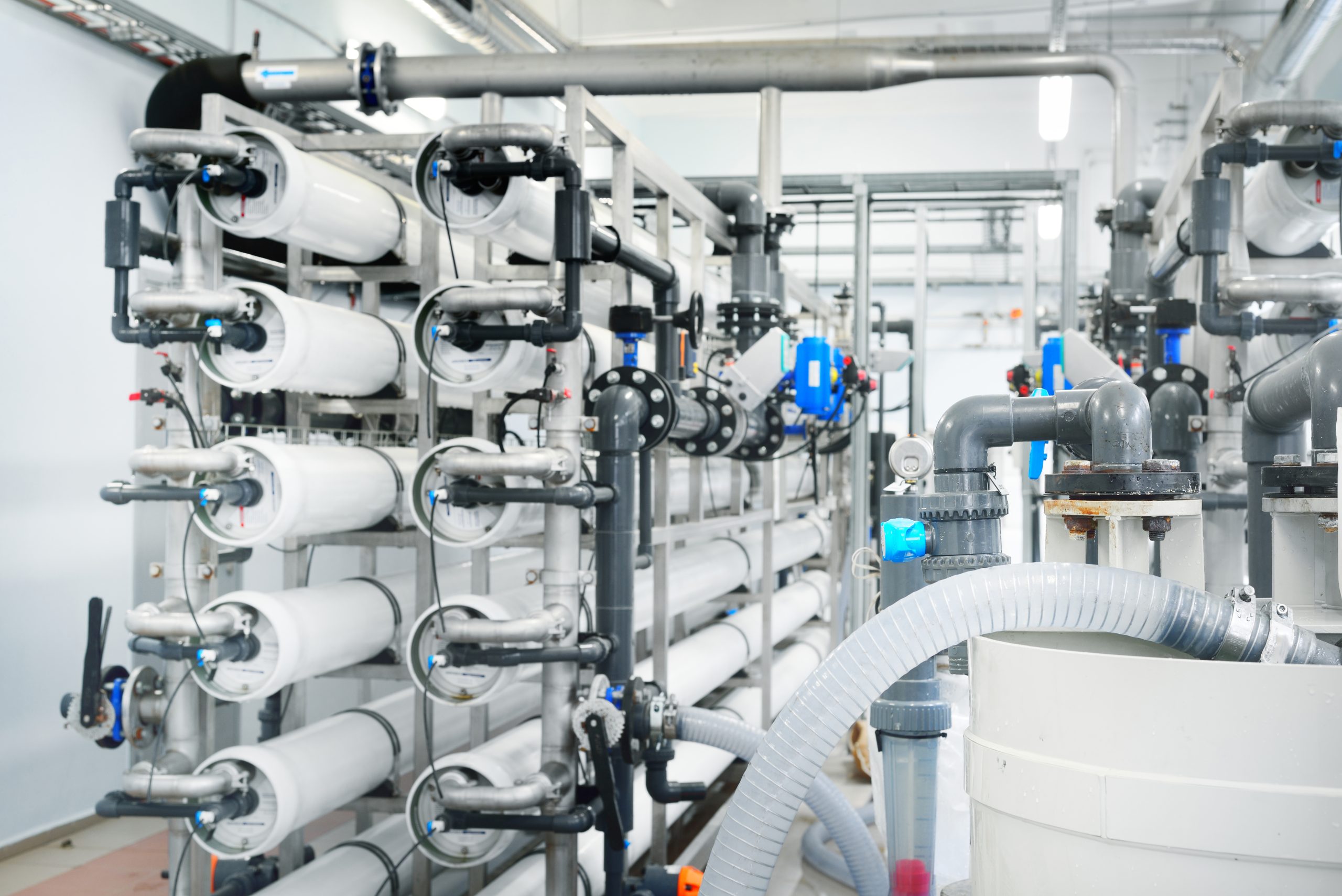Reverse osmosis is a water purification process that uses a semi-permeable membrane (synthetic lining) to filter out unwanted molecules and large particles such as contaminants and sediments like chlorine, salt, and dirt from drinking water. In addition to removing contaminants and sediments, reverse osmosis can also remove microorganisms and bacteria. It gets water clean down to a molecular level, leaving only pure water behind.
In reverse osmosis, an applied pressure is used to overcome the osmotic pressure and push the water from high concentration of contaminants to low concentration of contaminants. This means it’s being forced in reverse and the contaminated water is trying to move into the pure water, but because it must pass through a filter first, the contaminants get trapped and only the pure water passes through; resulting in the cleanest possible drinking water – which is exactly what we want!
Reverse osmosis typically involves four stages of filtration: a sediment filter, pre-carbon block, reverse osmosis membrane, and post-carbon filter. The sediment filter removes the largest particles, like dirt, sand, and rust to prevent clogging of the subsequent filters. The pre-carbon filter uses activated carbon to prevent anything larger than a spec of flour from passing through as well as attracting and bonding with positively charged ions to prevent chemical compounds, like chlorine and chloramines, from passing through to the third filter. The reverse osmosis membrane then removes molecules heavier than water, such as sodium, high levels of lead, dissolved minerals, and fluoride. Finally, the post-carbon filter polishes the water.




